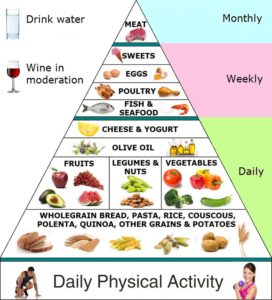There are eight limbs of yoga. They are briefly described below:
1.The yamas (restraints)
 These are like “Morals” you live your life by: Your social conduct:
These are like “Morals” you live your life by: Your social conduct:
–Nonviolence (ahimsa) – To not hurt a living creature
–Truth and honesty (satya) – To not lie
–Nonstealing (asteya) – To not steal
–Nonlust (brahmacharya) – avoid meaningless sexual encounters – moderation in sex and all things.
–Nonpossessiveness or non-greed (aparigraha) – don’t hoard, free yourself from greed and material desires
2.niyamas (observances)
These are how we treat ourselves, our inner discipline:
–Purity (shauca). Achieving purity through the practice of the five Yamas. Treating your body as a temple and looking after it.
–Contentment (santosha). Find happiness in what you have and what you do. Take responsibility for where you are, seek happiness in the moment and choose to grow.
–Austerity (tapas): Develop self discipline. Show discipline in body, speech, and mind to aim for a higher spiritual purpose.
–Study of the sacred text (svadhyaya). Education. Study books relevant to you which inspire and teach you.
–Living with an awareness of the Divine (ishvara-pranidhana). Be devoted to whatever is your god or whatever you see as the divine.
3.asana (postures)
These are the postures of yoga:
–To create a supple body in order to sit for a lengthy time and still the mind. If you can control the body you can also control the mind. Patanjali and other ancient www.thecleaneatingmama.com/paleo-grubs-book-review-blast-fat-with-food yogis used asana to prepare the body for meditation.
4.pranayama (breathing) – the control of breath:
inhalation, retention of breath, and exhalation
–The practice of breathing makes it easier to concentrate and meditate. Prana is the energy that exists everywhere, it is the life force that flows through each of us through our breath.
5.pratyahara (withdrawal of senses)
–Pratyahara is a withdrawal of the senses. It occurs during meditation, breathing exercises, or the practice of yoga postures. When you master Pratyahara you will be able to focus and concentrate and not be distracted by outward sensory.
6.dharana (concentration) – teaching the mind to focus.
–When concentrating there is no sense of time. The aim is to still the mind e.g. fixing the mind on one object and pushing any thoughts. True dharana is when the mind can concentrate effortlessly.
7.Dhyani (meditation) – the state of meditation
–Concentration (dharana) leads to the state of meditation. In meditation, one has a heightened sense of awareness and is one with the universe. It is being unaware of any distractions.
8.samadhi (absorption) – absolute bliss
–Absolute bliss is the ultimate goal of meditation. This is a state of union with yourself and your god or the devine, this is when you and the universe are one. All eight limbs work together: The first five are about the body and brain- yama, niyama asana, pranayama, and pratyahara – these are the foundations of yoga and provide a platform for a spiritual life. The last three are about reconditioning the mind. They were developed to help the practitioner to attain enlightenment or oneness with Spirit.